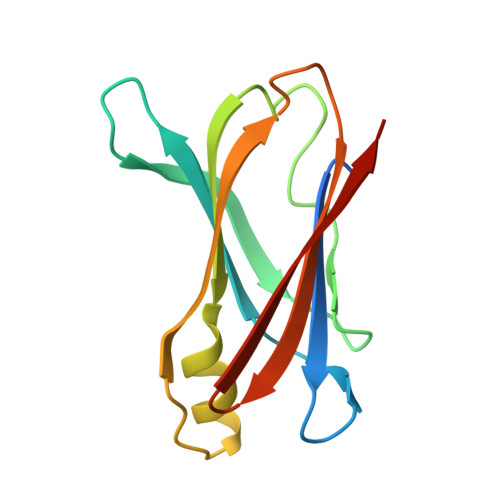Synthesis and characterization of potent bivalent amyloidosis inhibitors that bind prior to transthyretin tetramerization.
Green, N.S., Palaninathan, S.K., Sacchettini, J.C., Kelly, J.W.(2003) J Am Chem Soc 125: 13404-13414
- PubMed: 14583036
- DOI: https://doi.org/10.1021/ja030294z
- Primary Citation of Related Structures:
2FBR, 2FLM - PubMed Abstract:
The misfolding of transthyretin (TTR), including rate-limiting tetramer dissociation and partial monomer denaturation, is sufficient for TTR misassembly into amyloid and other abnormal quaternary structures associated with senile systemic amyloidosis, familial amyloid polyneuropathy, and familial amyloid cardiomyopathy. Monovalent small molecules that bind to one or both of the unoccupied thyroid hormone binding sites at the TTR quaternary structure interface stabilize the native state, raising the kinetic barrier for tetramer dissociation sufficiently that the rate of dissociation, and therefore amyloidosis, becomes slow. Bivalent amyloid inhibitors that bind to both binding sites simultaneously are reported herein. The candidate bivalent inhibitors are generally unable to bind to the native TTR tetramer and typically do not engage in monovalent binding owing to a strong inhibitor orientation preference. However, the TTR quaternary structure can assemble around several of the bivalent inhibitors if the inhibitor intercepts the protein before assembly occurs. Some of the wild-type TTR.bivalent inhibitor complexes prepared in this fashion retain a tetrameric structure when subjected to substantial denaturation stresses (8 M urea, 120 h). The best bivalent inhibitor reduced acid-mediated TTR (3.6 microM) amyloid fibril formation to 6% of that exhibited by TTR in the absence of inhibitor, a significant improvement over the approximately 30% observed for the best monovalent inhibitors (3.6 microM, 72 h). The apparent dissociation rate of the best bivalent inhibitor is effectively zero, consistent with the idea that TTR tetramer dissociation and inhibitor dissociation are linked-as a result of the inhibitor-templating tetramer assembly. X-ray cocrystal structures of two of the complexes demonstrate that the bivalent inhibitors simultaneously occupy both sites in TTR, consistent with the 1:1 binding stoichiometry derived from HPLC analysis. The purpose of this study was to demonstrate that bivalent inhibitors could be useful; what resulted are the best inhibitors produced to date. In this context, molecules capable of intercepting TTR during folding and assembly in the lumen of the endoplasmic reticulum would be of obvious interest.
Organizational Affiliation:
Department of Chemistry and Skaggs Institute for Chemical Biology, The Scripps Research Institute, 10550 North Torrey Pines Road, BCC265, La Jolla, California 92037, USA.















